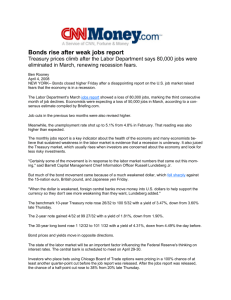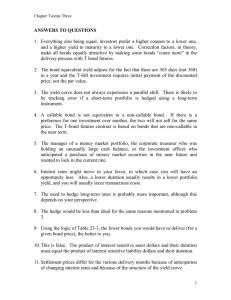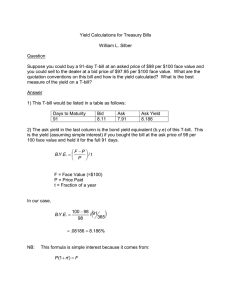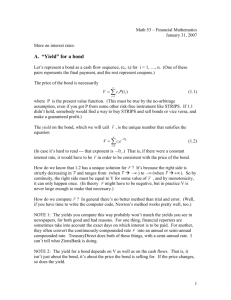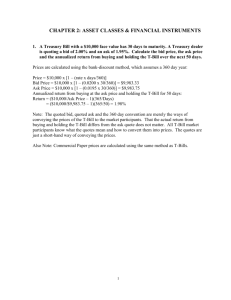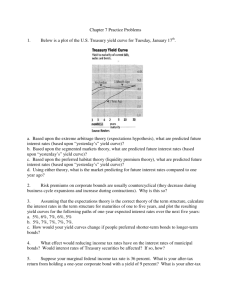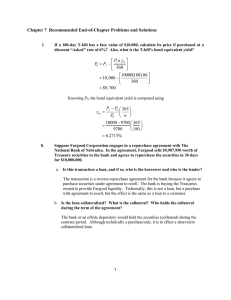04/29 - David Youngberg
advertisement
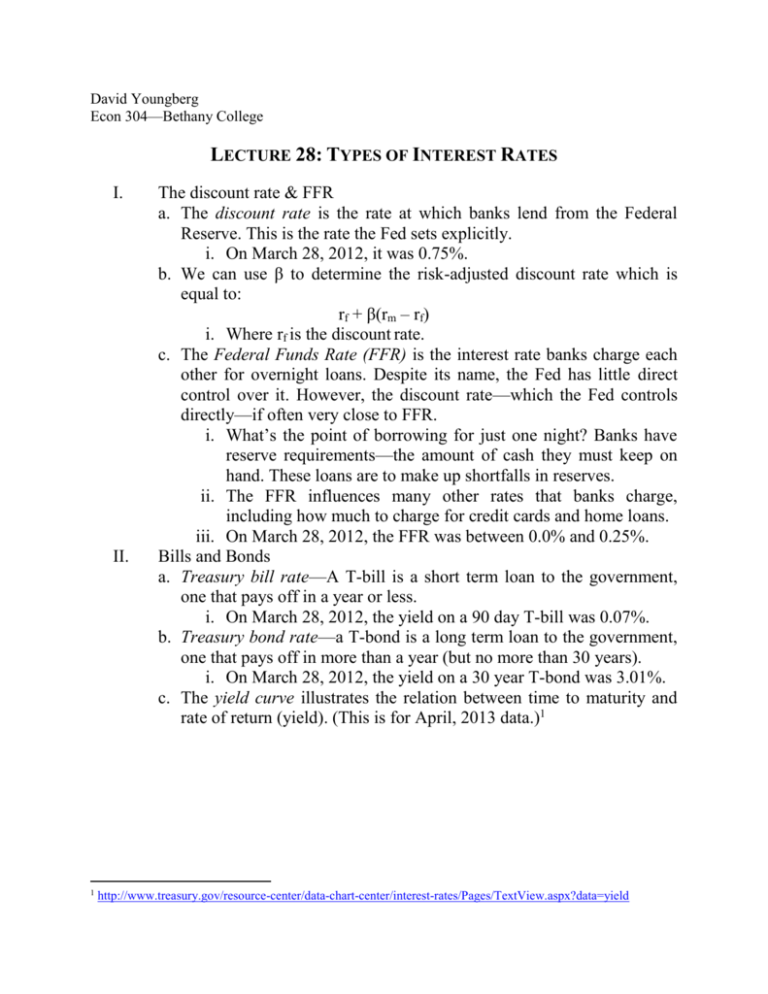
David Youngberg Econ 304—Bethany College LECTURE 28: TYPES OF INTEREST RATES I. II. 1 The discount rate & FFR a. The discount rate is the rate at which banks lend from the Federal Reserve. This is the rate the Fed sets explicitly. i. On March 28, 2012, it was 0.75%. b. We can use β to determine the risk-adjusted discount rate which is equal to: rf + β(rm – rf) i. Where rf is the discount rate. c. The Federal Funds Rate (FFR) is the interest rate banks charge each other for overnight loans. Despite its name, the Fed has little direct control over it. However, the discount rate—which the Fed controls directly—if often very close to FFR. i. What’s the point of borrowing for just one night? Banks have reserve requirements—the amount of cash they must keep on hand. These loans are to make up shortfalls in reserves. ii. The FFR influences many other rates that banks charge, including how much to charge for credit cards and home loans. iii. On March 28, 2012, the FFR was between 0.0% and 0.25%. Bills and Bonds a. Treasury bill rate—A T-bill is a short term loan to the government, one that pays off in a year or less. i. On March 28, 2012, the yield on a 90 day T-bill was 0.07%. b. Treasury bond rate—a T-bond is a long term loan to the government, one that pays off in more than a year (but no more than 30 years). i. On March 28, 2012, the yield on a 30 year T-bond was 3.01%. c. The yield curve illustrates the relation between time to maturity and rate of return (yield). (This is for April, 2013 data.)1 http://www.treasury.gov/resource-center/data-chart-center/interest-rates/Pages/TextView.aspx?data=yield d. The shape of the yield curve should strike you as a bit strange. For example, note that the ten-year bond (120 months) has a 1.82% yield and the thirty-year bond (360 months) has a 3.01% yield. i. But a taking a ten-year bond three consecutive times is the same as taking a thirty-year bond once. ii. Formally, P(1+i)30 = [[P(1+i)10](1+i)10](1+i)10 e. So what’s going on? i. One explanation is the “lock in” effect. When you take three ten-year bonds, you have more flexibility than just taking one thirty-year bond. In the former, you can get out after ten or twenty years if something disastrous happens and you need the money. ii. Another explanation is that if the market is anticipating a rise in the risk-free rate, then investors need to be compensated more now before they are willing to lock themselves into a potentially lower rate. The greater the certainty of the rise, the more interest rates have to increase to get lenders now. iii. It’s possible that when the opposite is occurring (anticipation of a lower rate), then it can overcome even the first explanation and we get a downward sloping yield curve. f. Both these influences are exaggerated at shorter times to maturity so the increase is (typically) steeper here. Interesting, it’s not in April of 2013. What does this suggest?
